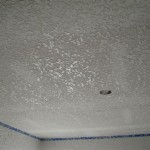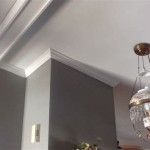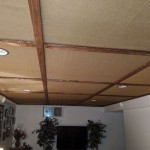What to Do With Old Ceiling Tiles: Disposal and Repurposing Options
Ceiling tiles, integral components of many interior spaces, eventually require replacement due to damage, age, or aesthetic preferences. The disposal and potential repurposing of these materials present several considerations, ranging from environmental responsibility to creative reuse. Understanding the options available for handling old ceiling tiles is crucial for homeowners, contractors, and facility managers alike.
Determining the appropriate course of action depends largely on the type of ceiling tile in question. Common types include mineral fiber, fiberglass, and metal tiles. Each material possesses unique properties and potential hazards, which directly impact disposal protocols and repurposing feasibility.
Identifying the Type of Ceiling Tile
The first step in managing old ceiling tiles is accurate identification. Mineral fiber tiles, often found in suspended ceiling systems, are generally composed of recycled paper, clay, and other aggregates. Fiberglass tiles, characterized by their sound-absorbing qualities, consist of glass fibers bound together with a resin. Metal tiles, designed for durability and aesthetic appeal, are typically constructed from aluminum or steel.
Visual inspection can often provide initial clues. Mineral fiber tiles tend to be porous and easily damaged, while fiberglass tiles exhibit a fibrous texture. Metal tiles are readily identifiable by their metallic sheen and rigid structure. However, older tiles, particularly those installed before the 1980s, may contain asbestos, a known carcinogen. If asbestos is suspected, professional testing is mandatory. Do not attempt to handle or disturb the tiles without proper certification and protective equipment.
Manufacturers often imprint identifying information, such as the material composition and date of manufacture, on the back of the tiles. Consulting these markings can provide definitive confirmation of the tile type and any associated hazards.
Proper Disposal Methods
The disposal of old ceiling tiles is governed by a combination of local, state, and federal regulations. Improper disposal can result in environmental contamination and potential legal repercussions. Therefore, adherence to established guidelines is paramount.
For mineral fiber and fiberglass tiles that do not contain asbestos, landfill disposal is a common option. However, some jurisdictions may impose restrictions on the types of waste accepted at landfills. Contacting the local waste management authority is essential to ascertain specific requirements.
Alternatively, certain recycling facilities may accept mineral fiber and fiberglass tiles. These facilities typically process the tiles into new construction materials, thereby diverting waste from landfills and conserving natural resources. Availability of recycling programs varies depending on geographic location.
Asbestos-containing tiles require specialized handling and disposal procedures. These tiles must be removed by certified asbestos abatement professionals, packaged in leak-proof containers, and transported to designated hazardous waste landfills. Strict adherence to regulatory protocols is crucial to prevent asbestos fiber release and protect public health.
Metal tiles, due to their inherent recyclability, can be readily processed at metal recycling facilities. Recycling metal tiles not only reduces waste but also recovers valuable resources that can be reused in the production of new metal products. Prior to recycling, any attached components, such as insulation or adhesives, should be removed if possible.
Creative Repurposing Ideas
Instead of discarding old ceiling tiles, consider the possibility of repurposing them for alternative uses. Repurposing offers a sustainable and cost-effective approach to managing waste materials while simultaneously promoting creativity and resourcefulness.
Mineral fiber and fiberglass tiles can be repurposed for acoustic dampening purposes. These tiles, due to their sound-absorbing properties, can be installed in home theaters, music rooms, or workshops to reduce noise levels. The tiles can be mounted on walls or ceilings to create a more acoustically comfortable environment. Ensure the tiles are cleaned and sealed before installation to prevent the release of dust or fibers.
Metal tiles can be transformed into decorative wall panels or accent pieces. Their inherent durability and aesthetic appeal make them suitable for a variety of design applications. The tiles can be painted, distressed, or otherwise customized to complement existing décor. Metal tiles can also be used to create unique backsplashes in kitchens or bathrooms.
Smaller pieces of mineral fiber or fiberglass tiles can be used as packing material for fragile items. Their lightweight and cushioning properties provide effective protection during shipping or storage. This repurposing strategy reduces the need for new packing materials and minimizes waste.
For avid gardeners, mineral fiber tiles can be broken down and added to potting soil to improve drainage and aeration. The porous nature of the tiles helps to prevent soil compaction and promotes healthy root growth. However, ensure the tiles are free from any harmful chemicals or contaminants before using them in gardening applications.
Another potential repurposing application involves using ceiling tiles as insulation in pet shelters. The tiles can be cut to size and installed within dog houses, cat shelters, or other animal enclosures to provide thermal insulation during cold weather. Ensure the tiles are securely fastened and covered to prevent pets from chewing or ingesting them.
When considering repurposing options, always prioritize safety. Avoid using tiles that are damaged, deteriorated, or potentially contaminated with hazardous materials. Wear appropriate personal protective equipment, such as gloves and masks, when handling old ceiling tiles to minimize exposure to dust or fibers. Thoroughly clean and disinfect the tiles before repurposing them for any indoor applications.
The process of managing old ceiling tiles requires careful consideration of material composition, disposal regulations, and potential repurposing opportunities. By adhering to established guidelines and exploring creative reuse options, individuals and organizations can minimize environmental impact and promote sustainable practices. Proper identification of the tile type is paramount, especially regarding the potential presence of asbestos. If asbestos is suspected, professional assessment and abatement are essential to ensure safety and compliance. Furthermore, exploring local recycling programs can offer a responsible and environmentally conscious alternative to landfill disposal. Ultimately, a combination of informed decision-making and proactive action is necessary to effectively manage old ceiling tiles and contribute to a more sustainable future.

Old Dated Ceiling Tile No Problem Pink Little Notebookpink Notebook

Diy How To Update Old Ceiling Tile Pink Little Notebookpink Notebook

The Dining Room Ceiling Oops Daniel Kanter

Diy How To Update Old Ceiling Tile Pink Little Notebookpink Notebook

11 Ways To Cover A Hideous Ceiling That Anyone Can Do

Diy How To Update Old Ceiling Tile Pink Little Notebookpink Notebook

Diy How To Update Old Ceiling Tile Pink Little Notebookpink Notebook

Victorian Tiles Replace Old Fashion Ceiling Talissa Decor

How To Cover Acoustic Tile Ceilings And Easy Hometalk

Updating An Old Ceiling Ceilings Armstrong Residential
Related Posts








